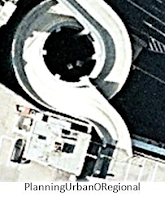Please visit my web page "Urban Tenets" at https://urbantenets.nl/
************************************************
Projections, theories, conclusions and research methodologies being put together, shaped over years, formulated over months, are susceptible of getting outdated even before getting published and usually starts losing significance by the time actually put into practice. Even moment after arriving at a conclusion, outcomes are getting overshadowed and gets diluted considering unavoidable quantum of intellectual insights, discussions, counterarguments and constructive criticism on subject which follows on multiple public forums, not to speak of colossal new raw data surfaced post publication which was never part of base data and assumptions in the first place and poised to lead outcome to a different conclusion. Even scientific theories, concepts and methods change over time or sometimes radically on a new discovery.
We need to acknowledge that data being an amorphous,
colossal and dynamic entity and a foundational attribute as a common
denominator across knowledge streams has unprecedented and overwhelming potential
to disrupt edifice of accumulated knowledge. To give a perspective and to
substantiate thoughts its noteworthy that as per Forbes 2018 report there are
2.5 quintillion bytes of data created each day and 90 percent of data was
generated over just two years. Its nearly impossible for any individual or
expert to process such flux of data in a limited time with exiting widespread
tech-tools, where any random piece of newly generated data may be vital and not
to be overlooked. We also need to acknowledge that most of existing workforce
around the world is neither equipped to handle such amount of data nor skilled
enough today to use exascale computing system which may arrive anytime soon.
It’s difficult to come to terms to the fact that a substantial quantum of
unfiltered near real-time data can supersede a legitimate factual outdated
piece of information. There is also an urgent need to recognise the upcoming
role of machine in data processing and experts should increasingly focus more
on human aspects of planning and policy.
Learning, for individuals as well as community, is an
enlightening journey from one conclusion followed by disruption leading to
another conclusion and so on, that’s how we evolve, hence policies, governance
and planning processes have to take cognizance of the ever emerging information
and data set, quickly and constantly adapting to the new data inferences and
insights and should mimic the dynamic attributes based on which they are
drafted and implemented.
It also leads to the realisation that traditional predefined
data sets and tools to analyse and interpret data, including popular
methodology of research and planning are somewhat overrated and calls for a new
renaissance.
Author- Anoop Jha






























